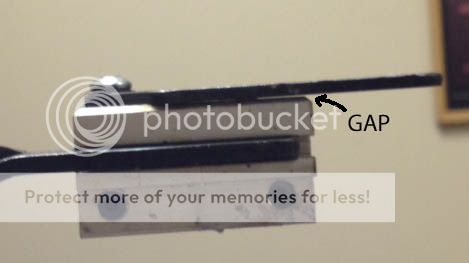OK,
New caster here. First mold is a .535 round ball.
Lee Mold. Ran my first 60 this morning before work.
But at about 50, the sprue had a bunch of flash on it, The slicer is bent I guess from holding it wrong while hitting with dowel. I ran the last 10 from must the bottom one.
How can I bend it back to be flush WITHOUT putting a warpy wavy shape to it?

New caster here. First mold is a .535 round ball.
Lee Mold. Ran my first 60 this morning before work.
But at about 50, the sprue had a bunch of flash on it, The slicer is bent I guess from holding it wrong while hitting with dowel. I ran the last 10 from must the bottom one.
How can I bend it back to be flush WITHOUT putting a warpy wavy shape to it?






 :redface: :redface:
:redface: :redface: